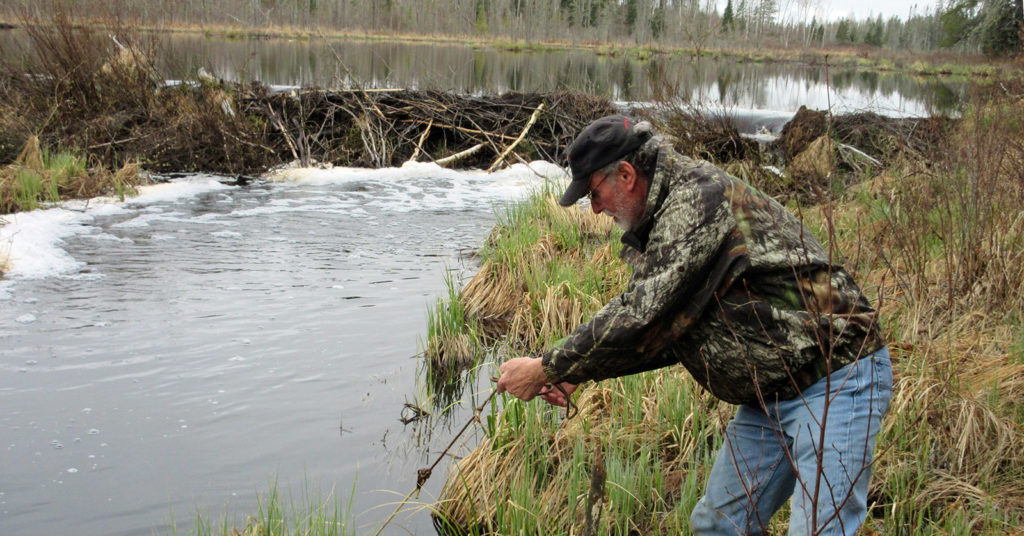
Minnow Trapping … A Rite of Spring
Spring is an exciting time of the year as we watch the ice leave Lake Vermilion, the return of the loons, trees budding out, and spring flowers blossoming. It is also the time to begin minnow trapping with the hopes of catching a fresh batch of minnows for the upcoming walleye fishing season.
I started trapping minnows ten years ago and have not missed a season since. My neighbor and trapping partner, Tom Forconi, has been at it much longer. He picked it up from his dad and even today the trap he uses still bears a tag with his father’s name… a visual reminder of the long standing tradition. Most years, we trap between 30-40 dozen minnows, enough for our needs plus providing a supply for a few friends.
We use standard funnel traps baited with either a cracker or cookie and toss in a few small pieces of crumpled up tin foil which serve as attractors for the minnows. Other trappers prefer to use dry dog food as bait claiming it takes longer to dissolve underwater. Because we place our traps in moving water, we add a railroad spike or short piece of ½ inch pipe to keep our traps in place in moving water. The traps must bear a waterproof tag with the owner’s name and address to comply with Minnesota DNR regulations.
Minnow trappers are a bit like stream trout fishermen and blueberry pickers in that they rarely share the location of their “favorite spots”. Suffice it to say that Tom and I have success trapping in beaver ponds and streams within 15 miles of Tower.
We check our traps every two to three days and sort our catch in the field to avoid bringing any unwanted species back to Vermilion. Besides rainbows and shiners, our traps often contain trash minnows (i.e., sticklebacks, mud minnows, and an occasional pollywog or bullhead). Sometimes we catch some strange things such as bull frogs and once a field mouse that apparently swam underwater lured by the cookie used as bait. On yet another occasion, half of our trap was missing…. probably the work of a river otter.
We transport our freshly trapped minnows in an aerated minnow bucket containing fresh well water. On warm days, ice is added to the water as minnows survive much better in cold water. We also count our minnows because DNR regulations limit the number to 12 dozen that may be transported unless you possess a commercial minnow license.
The DNR rules for minnow trapping are spelled out in the bait section of the 2018 Fishing Regulations (pages 31-33). Among other things, minnow trappers must have a current fishing license. Minnows must be transported in tap or bottled water (i.e., you can’t use water from the stream or lake you are collecting in to transport bait). Also, you cannot collect your bait within state parks, designated trout waters, and aquatic invasive species infested waters. Since Vermilion is a designated aquatic invasive species infested water (spiny waterflea), you cannot legally take minnows and leeches from the lake to use as bait. There are also limits on trap size and design as well as trap tagging requirements. All unused bait must be disposed of in the garbage.
Minnow trapping is a very enjoyable springtime pursuit. My neighbor and I are out in the woods enjoying all the invigorating sights, sounds, and smells of the spring season when tending our traps. We get to experience a bit of a rush when the water literally “begins to boil” when lifting a trap containing several dozen minnows from the stream. And, it all culminates with an added measure of satisfaction when catching Vermilion walleyes with minnows we personally captured from a nearby stream or pond. It is truly a rite of spring.
Read eVermilion